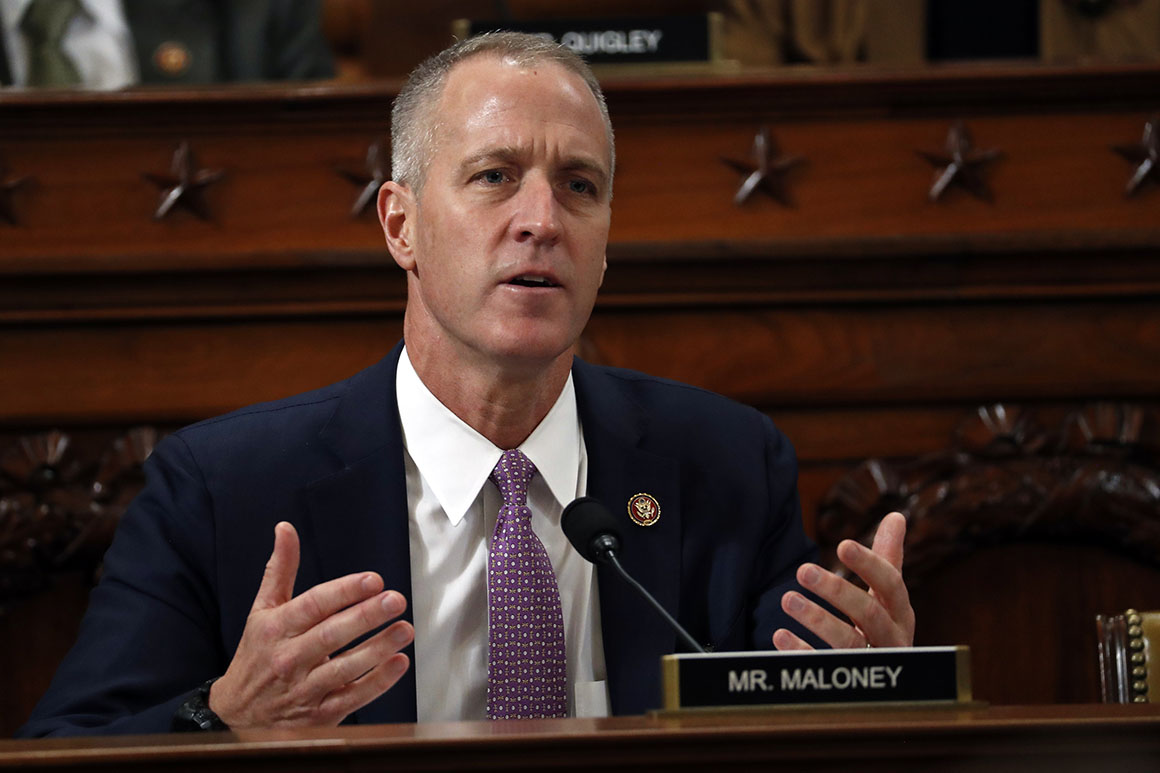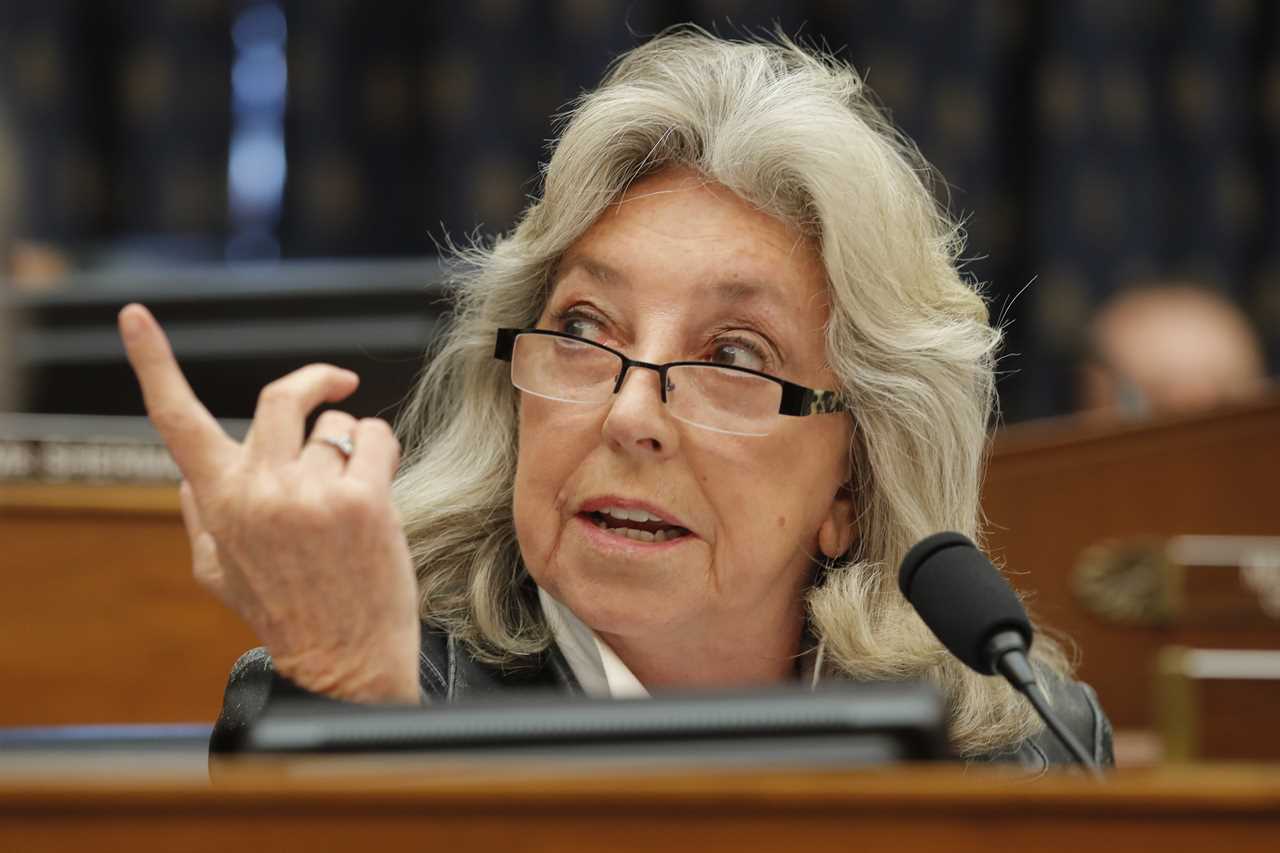
The fight isn’t over, but House Democrats’ campaign chief believes his party has at least avoided a redistricting doomsday that would’ve automatically handed the GOP the keys next January.
Republicans still hold an indisputable advantage going into the midterms. But Democrats have seized this year’s redistricting battle with an unexpected ruthlessness, carving out more blue territory than most had expected even just a few months ago, and netting key wins in the courts. That includes New York’s new map this week, in which Democrats could pick up as many as three seats even as the state loses one overall.
The disruptive strategy has left some Democratic incumbents fighting to defend marginal seats instead of enjoying newly drawn, safer districts, which the party sees as a side effect to the Democratic Congressional Campaign Committee’s efforts to draw as many competitive seats as possible. Then there’s the party’s legal approach, including its successful lawsuits so far in Ohio and Alabama, with several more critical court updates to come in the next week.
“We’re doing a hell of a lot better than pundits thought we would,” DCCC Chair Rep. Sean Patrick Maloney (D-N.Y.) said in an interview Tuesday, adding that his team’s own internal projections put Democrats up “five to eight seats” better than they expected.
Many Democrats privately acknowledge that it’s probably not enough to save their majority, and certainly not without a drastic shift in headwinds. Maloney himself admits, with an optimistic spin, that the party will be the “underdogs” in their fight to hang onto the House.
Still, the party’s strong success in a handful of states like Illinois, Oregon and now New York — on top of a surprise Supreme Court vacancy and a steady decline in nationwide coronavirus cases — has injected much-needed energy into the Democrats’ push to keep the House come November.
“There has been a sense in the caucus, given that we view this as an election to defend democracy against insurrection and coups, that we have to do everything we can do,” said Rep. Jamie Raskin (D-Md.), describing the party’s more aggressive redistricting posture.
“It is going to be a political slugfest,” Raskin said.
The strong maps for House Democrats in a handful of critical states come after a brutal winter for the party, which has now racked up 39 retirements, the most since the 1996 cycle. They’ve also watched the approval ratings for President Joe Biden tank, while economic concerns like inflation and snarled supply chains have rattled their most vulnerable members. The DCCC still outraised its GOP counterpart last quarter, but that cash advantage is less than previous cycles.
The party’s agenda in Congress, meanwhile, has choked to a halt.
Maloney said the party has instead tried to focus on what it can control. The Democrats’ strategy this cycle was to put as many seats as possible in play, even if it didn’t guarantee a deep blue seat for their own incumbents. For instance, Maloney’s own swing district will become only slightly less competitive, despite the fact that Democrats have full control over redistricting in the state.
And he’s not the only one: Rep. Dina Titus (D-Nev.) memorably told constituents at a town hall in December that she “got fucked by the Legislature on my district” after Democratic legislators drew a map that dropped her district from one Biden won by 26 points to one he would have won by just 9 points.

Some of the maps have been so brutal to Republicans that their own members have complained that GOP leadership was ceding ground to Democrats in states where they were playing it safer, such as Missouri, Kentucky and Florida.
While Democrats hammered their GOP opponents for years for contorting congressional lines to their favor, they’re seeking whatever advantage they can find this year.
“I believe in bringing a gun to a gunfight,” Maloney said. He compared seeking a map without gerrymandering to competing “with one hand tied behind our back.”
Republicans, meanwhile, say they never believed they could seize back the House on map-drawing alone, though there are plenty more factors in their favor.
“We’ve said throughout the process that Republicans won’t win a majority through redistricting,” said Michael McAdams, communications director for the House GOP campaign arm. “We are primed to retake the majority because Democrats are responsible for skyrocketing prices, a nationwide crime wave, and a crisis along our southern border.”
The DCCC already appears to be bracing for a potentially brutal red wave, putting more resources behind seats where Biden won by double digits — and, in doing so, highlighting the potential danger of their spread-thin redistricting strategy. Last week, the campaign arm expanded its list of vulnerable Democrats in battleground areas referred to as “frontline” districts; it now includes the districts of Virginia Rep. Jennifer Wexton, where Biden won by 19 points and Illinois Rep. Bill Foster, where Biden won by 16 points.
Democrats say it’s because they aren’t willing to take any chances after the caucus’ stunning fate in 2020, when they lost 13 seats despite capturing the White House and Senate. In that election, party leaders drew flak for overshooting their chances to flip red seats in states like Arkansas and North Carolina, rather than shoring up their own incumbents.
“If we learned one lesson from 2020, it's that you start with your incumbents, and take nothing for granted,” Maloney said.
The battle to finalize House maps will likely drag on for several more months, with key states like Florida — where GOP lawmakers are mulling how far to go with their own gerrymandering — still to come. Another critical state is Pennsylvania, where Democrats, who control the governor’s mansion and have the upper hand in the courts, must eke out significant election wins to have at least some chance of keeping their majority.
Democrats privately insist that their political fortunes will look sunnier by the summer, especially if the pandemic has receded. And it’s partly that uncertainty — along with the historically dismal trends for a party in power going into the midterms — that prompted their party leaders to take a far more aggressive stance in redistricting this cycle.
“We've had some success in some areas, and it's a credit to the DCCC and the team,” said Rep. Pete Aguilar (D-Calif.), vice chair of the House Democratic Caucus. “Still a long way to go in this process, but clearly a good sign.”
----------------------------------------
By: Sarah Ferris and Ally Mutnick
Title: Dems avert total redistricting doomsday — but they're not out of the woods
Sourced From: www.politico.com/news/2022/02/02/democrats-redistricting-midterms-00004497
Published Date: Wed, 02 Feb 2022 04:30:00 EST






